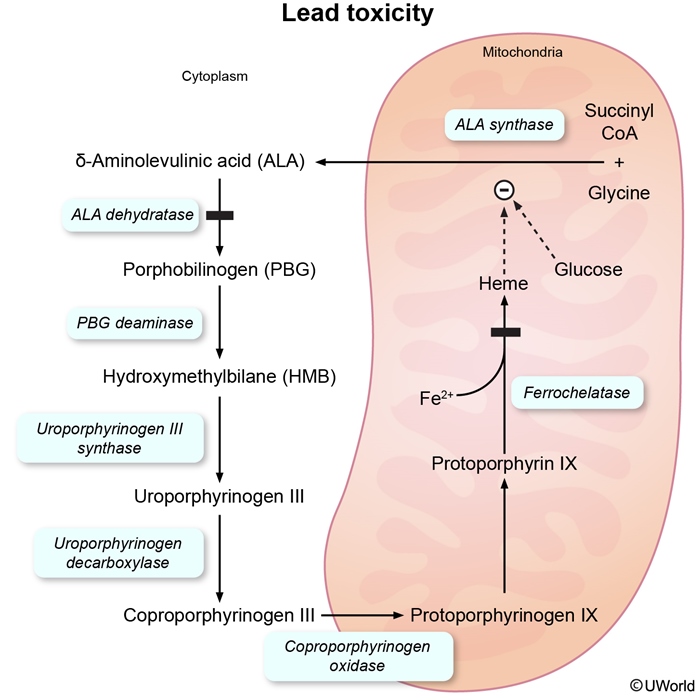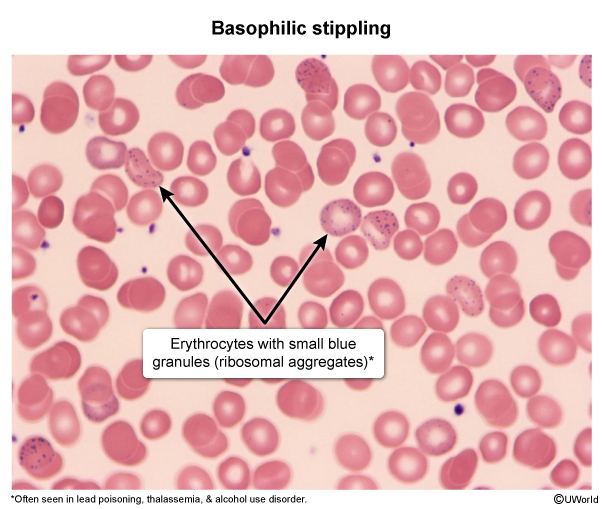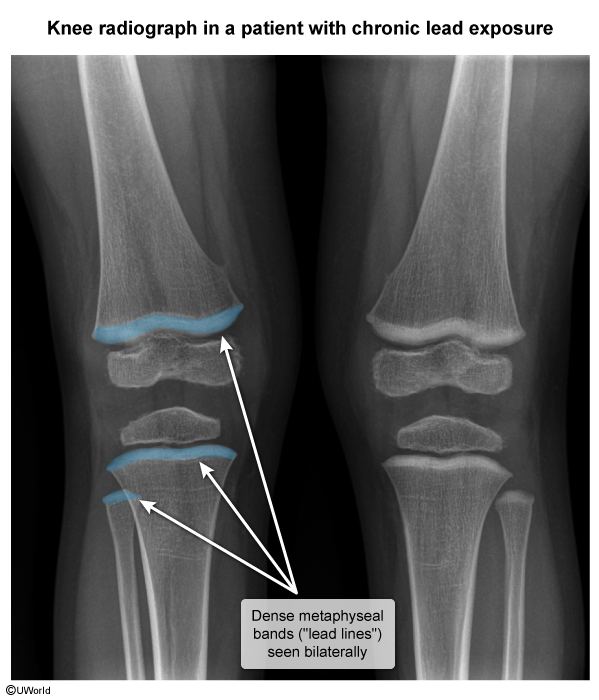Lead Poisoning
Article Sections
Introduction
Lead is a naturally occurring toxic metal used in the manufacture of many products (eg, batteries, paint, plumbing materials, ammunition). Exposure to lead can cause significant health consequences, particularly in children.
Pathophysiology
Lead can enter the human body via the lungs (eg, inhalation of lead dust), intestinal tract (eg, ingestion of lead-contaminated food), and, to a lesser extent, the skin (eg, handling of lead-contaminated products). The majority of absorbed lead is excreted in the urine or bile, and the remainder is distributed and retained in 3 main compartments: blood, soft-tissue organs (eg, brain, kidneys), and skeleton. On entry, lead is first distributed to the blood, where 99% is bound to erythrocytes. The remaining 1% is free-floating in plasma and subsequently distributed to soft-tissue organs and the skeleton. Lead in the blood and soft tissues has a half life of about 1 month. Conversely, lead distributed to the skeleton has a much longer half life (about 25 years). About 70%-95% of the total body burden of lead is within the skeleton, which serves as an endogenous source of lead as it leaches out over decades, even if the original exogenous source has been removed.
Continue Learning with UWorld
Get the full Lead Poisoning article plus rich visuals, real-world cases, and in-depth insights from medical experts, all available through the UWorld Medical Library.
Figures

Images

